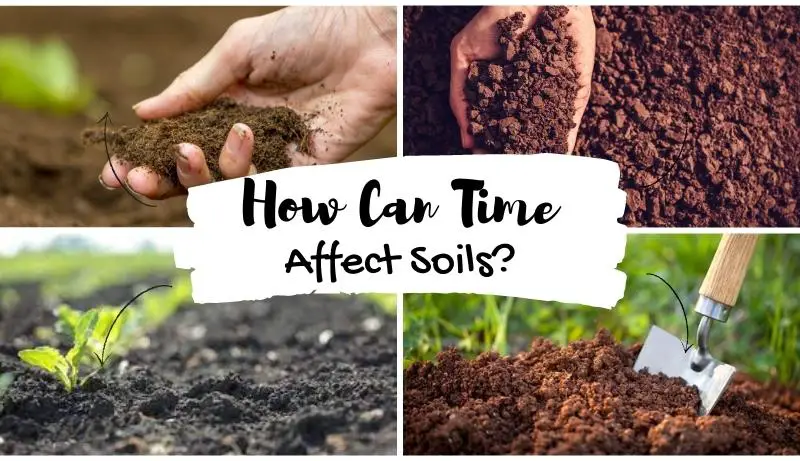You might have assumed there is nothing new to discuss soil. But have you ever thought of why the soil of your backyard differs from the nearby park? How does the soil form change with the swipe of the season?
Well, you are probably giving it a thought now!
Soil is one of the primary elements of the earth’s surface. However, the soil is not the same in every part of the world. This variation is dependent on several aspects.
It might come to you as agape that time has an impact on the way soil forms. And there is a lot more to know!
In this article, we will talk you through everything that you need to know about soil formation. Uniquely, we will emphasize how can time affect soils.
Let’s get them!
Types of Soil
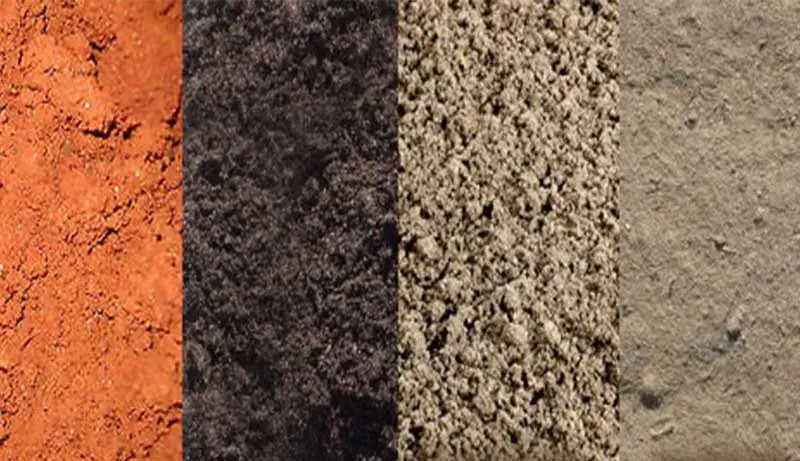
If we want to understand the nature of the soil, it is imperative to focus on the kinds of soil. As a rule, we can classify soil into 13 types. Let’s check out the facets of the soil at a glance. You would appreciate having some of the Potting Soil for Avocado Tree, so take a moment to check them out.
Alluvial
Alluvial soil forms from the deposition of rock just beside the river bed. As river water carries the rock sediments, it is very fertile. Alluvial soil is abundant in the Indian region.
Glacial Drift
This kind of soil is nothing but the supplanting of glaciers and icebergs. Glacial drift is a blend of clay, sand, silt, boulders, and gravel.
Lacustrine
When deposition occurs from the settling of still water sources, Lacustrine soil forms. This soil usually deposits on the brim of the lake.
Marine
As the name suggests, the soil you see near the sea is marine soil. This soil is not solid like the alluvial one. Rather, it is a mixture of clay, silt, and sand.
Colluvial Soils/Talus
Gravitational force results in the formation of colluvial soil. Because of the fluctuation in moisture content, the earth crawls down steep slopes in mountains and hills. That way, the soil loosens. You can find such soil in the valleys at the base of the mountains.
Eoline
The formation of eoline soil is quite interesting. The flowing wind results in the settling of sand over a vast area. One common instance of eoline soil deposition is the dunes in the desert.
Loess
As per the pattern, loess is quite similar to eoline. This kind of soil settling happens from the wave of wind. The only contrast is the gravel is fine and has a consistent grading.
Caliche
Caliche has a high content of CaCO3. Cement is the most common example of caliche soil. Apart from CaCO3, this soil contains sand, gravel, and clay.
Cumulose /Muck
In comparison to others, the organic quotient in cumulose soil is higher. When soil particles accumulate beneath the vegetation under saturated water, it results in the muck.
Loam
Loam soil is nothing but a composition of silt, sand, and clay. There can be a substantial portion of the organic component in this soil.
Bentonite
Bentonite is minute grains of ashes from a volcanic eruption. What makes this soil unique is its plastic-like feel. The liquid nature of bentonite makes it an ideal pick as a lubricant for drilling.
Tuff
It will not be wrong to term tuff as a finer form of bentonite. The fine particles of volcanic ash form tuff.
Gumbe
Gumbe is a very dark hued soil. This soil has a sticky texture and feels more like plastic. You may also like some of the Soil for Beans from our list.
Marl
Marl is a fine grain soil of marine origin. It is enriched with calcium carbonate. This soil forms from the deposition of body cells of dead animals in the ocean.
Characteristics of Soil
Different-sized particles make up soil. Apart from that, mineral particles, organic matter, water, and air are present in all soils.
The combination of these factors determines the features of the soil. That is why, the texture, structure, consistency, chemistry, and color of soil vary region-wise.
Soil Composition – What is it?
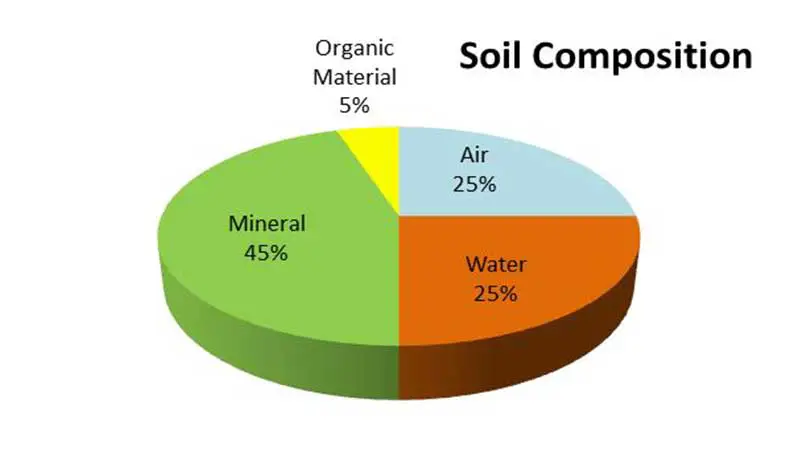
Soil is a thin layer of material that generates from the weathering of rocks. In simpler terms, soil covering the earth’s surface is a constituent of rock particles.
Mineral particles, organic materials, air, water, and live beings make up the majority of it. All of these components interact slowly but continually. Don’t forget to check the Soil for Fruit Trees reviews.
What Are the Methods of Soil Composition?
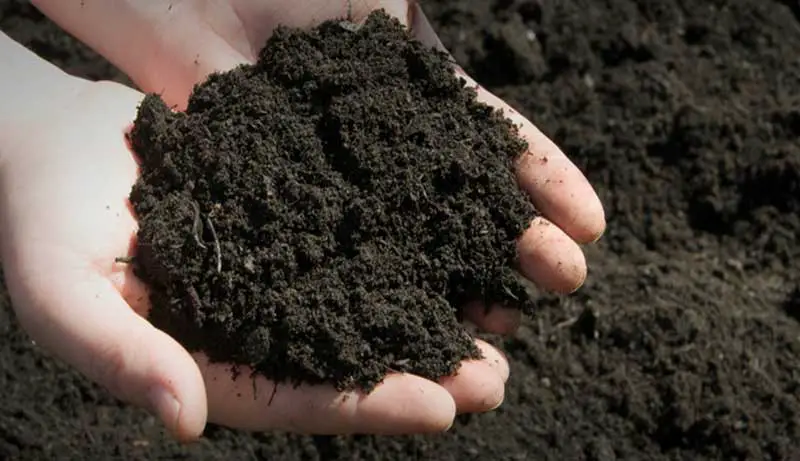
The formation of soil is a continuous process. It alters with time. Weathering results in the progressive deterioration of rocks and forms the soil.
By and large, we can classify weathering into three categories- chemical, physical or biological.
Chemical Weathering
A change in the chemical makeup of rocks causes them to break down. When the minerals in rocks react with water, air, or other chemicals, this can happen.
Physical Weathering
Rocks break down as a result of mechanical action. Changes in temperature, abrasion (when rocks clash), and frost can all cause rocks to break down.
Biological Weathering
In this kind of weathering, live organisms break down rocks. Plant roots can grow into fissures in the rock, splitting it, and burrowing animals let water and air get into it.
How Can Time Affect Soils?
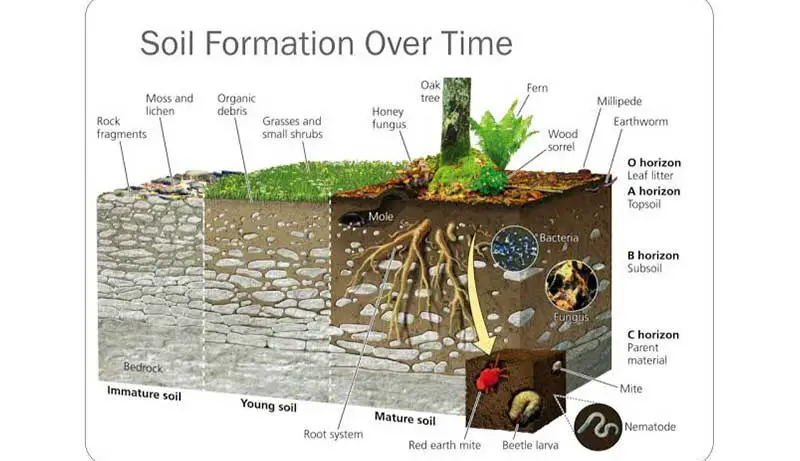
There is no doubt about the impact of time on soil formation. With the passage of time, climate and vegetation shape the landscape and parent material.
Minerals change shape, chemical compounds and clays are moved downward through the soil profile, and organic matter accumulates as soils age.
Here to mention, the aging here indicates the development of soil. This aging depends on some other factors like climate and microorganisms. Check out the most essential Review for Potting Soil for Jade Plant.
Is There Any Other Factor that Affects Soil?
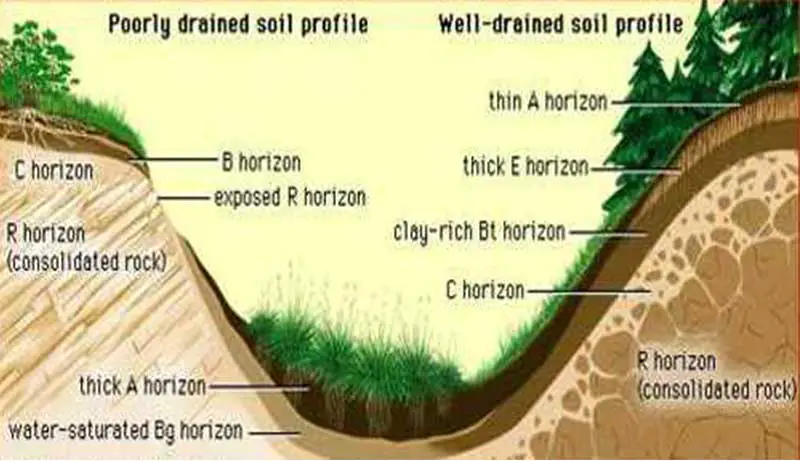
As mentioned earlier, no one factor determines the formation of soil. Apart from time, a handful of factors collectively come into play.
When it comes to the formation of soil, four fundamental factors have a direct influence here. They are- organisms, climate, landscape or topography, and parent material.
Now, let’s find out how each of these components plays a role in forming the soil.
Climate
One of the primary factors that affect the way soil forms is climate. Among all other facets of climate, rainfall and temperature play a key role.
Over time, rainfall dissolves the organic components and water-carrying organisms from soil. Such washing out may make the soil less fertile.
On the other hand, the temperature has a positive impact here. It has a direct influence on the organic decomposition of soil. Besides, it affects the weathering as well. For that, moisture and heat make the soil formation faster.
Organisms
Here, we are using organism as an umbrella term for plants, microorganisms, insects, and animals. It might come as a revelation that humans too, have a role in shaping the soil.
As the soil begins to form, plants start growing. These plants die and decompose in the soil. Again, animals consume food from the soil. Their wastage and dead bodies provide nutrition to the soil as well.
As a result, the soil undergoes modification. Bacteria, fungus, and worms decompose plant litter and animal wastes and remnants into organic matter. Peat, humus, or charcoal are examples of this.
Topography or Landscape
The grading, length, and shape affect the drainage system of the landscape. This slope fixes the amount of rainfall, and ultimately the vegetation of that area. All these aspects contribute to the way soil forms.
Gravity, wind, and water result in the movement of soil particles over a large area. That is what makes the soil on the hill shallow.
Likewise, the transported particles form alluvial, aeolian, and colluvial soil.
Parent material
The base of the soil is nothing but minerals. The erosion and weathering of rocks form these minerals. The factors that aid in the breakdown of the parent material are not few.
Nevertheless, water, wind, temperature, gravity, chemical interaction, organisms, and pressure change are some of the chief aspects. The facets of the newly formed soil are dependent on the parent material and its formation.
Frequently Asked Questions & Answers
1. What do you mean by soil formation?
Soil is a slender layer that covers the earth’s surface. This layer forms from rock weathering. Mineral particles, organic materials, air, water, and live beings make up the majority of it, all of which interact slowly but consistently.
2. Can you tell me about some soil quality determinants?
In simpler terms, soil quality is a parameter to discern the way it nourishes plants. That is, the supply of water and nutrients, bulk density, and rate of respiration are determinants of soil quality.
3. Does temperature have any impact on the way soil forms?
Yes.
Fluctuation in the temperature of soil may affect the plants directly and indirectly. With the slightest change in the temperature, moisture and nutrient absorption get hampered. That ultimately leads to the death of the plant.
4. What are the factors that determine the color of soil?
The color of the soil depends solely on the minerals present in it. Soil gets a yellowish or reddish tint from ferric oxides. Conversely, the dark brown color of the soil comes from the high content of organic materials.
5. Is soil formation dependent on the climate?
Yes.
Climate is one of the key aspects that determine the formation of soil. Among other facets, rainfall and average temperature have a substantial impact on soil formation.
6. What do soil master horizons mean?
The layer or horizontal bands beneath the soil profile are soil horizons. There are six prime horizons- A, B, C, E, O, and R. These six are known as soil master horizons.
7. What is topography?
Topography refers to the landscape of any given area. When it comes to soil formation, two topographic facets play the role. One facet is the aspect and the other is the slope.
8. What is the time required for the formation of soil?
The formation of soil doesn’t happen overnight. On average, it takes over 400 to 500 years for the soil to form completely.
Final Thoughts
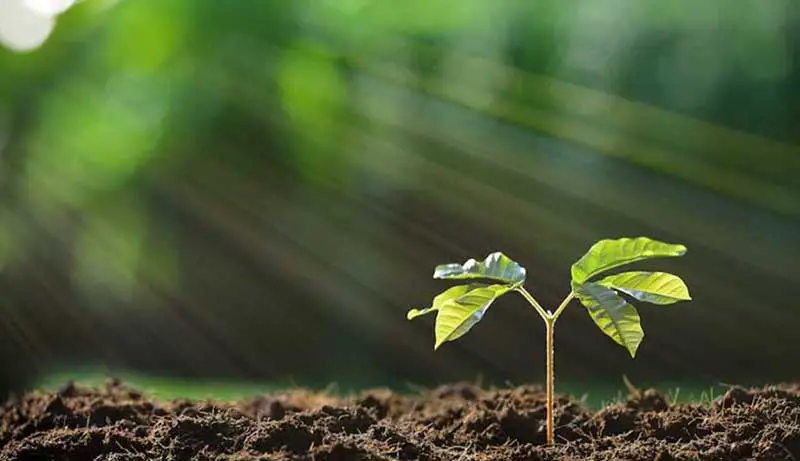
Differences in soil composition over regions may appear to be uncomplicated in the first place. However, the reality is not the same. The formation of soil is dependent on multiple facts, including time.
Our expert team tried to provide you with a brief idea about soil formation. Nevertheless, there is a lot more to know. Let us know what you want to know next. We will be glad to help you out.

David, the founder of The Garden Fixer, started with a passion for gardening in 2012. He has continued his passion for gardening and desire to improve his skills and wanted to share his journey and helpful knowledge with other like-minded individuals.
He launched The Garden Fixer as an outlet for those interested in learning more about Gardening in hopes they can take what they learn and apply it for themselves!
